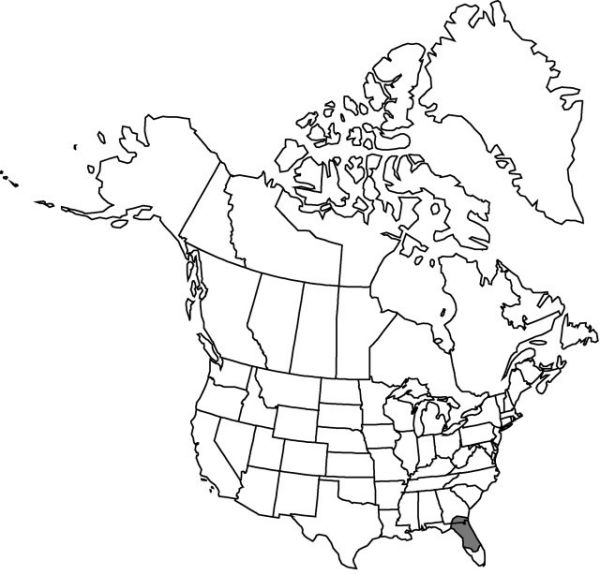Zephyranthes treatiae
Proc. Amer. Acad. Arts 14: 300. 1879.
Leaf-blade dull green, to 4 mm wide. Spathe (1.8–) 2–3.3 (–3.6) cm. Flowers erect to inclined; perianth mostly white to pink, color deepening with age, funnelform, (6–) 6.6–9.5 (–11) cm; perianth-tube green, (1.7–) 2–3 (–3.1) cm, increasing in diam., at least 1/4 perianth length, ± equaling (2/3–11/4) filament length, ca. 2/3–11/3 spathe length; tepals usually reflexed; stamens diverging, appearing equal; filaments filiform, (1.6–) 2–4 (–4.6) cm; anthers 3–6 (–8) mm; style longer than perianth-tube; stigma 3-fid, exserted more than 2 mm beyond anthers; pedicel 0–1 (–1.2) cm, shorter than spathe. 2n = 24.
Phenology: Flowering mid winter–spring (Jan–Apr).
Habitat: Peaty-sandy soil, usually associated with wet inlands or former pineland sites
Elevation: 0–100 m
Discussion
It has generally been thought that Zephyranthes atamasca and Z. treatiae are distinguishable only by differences in leaves and habitat, and that their flowers are not significantly different. However, the greater length of the perianth tube compared with that of the filaments in Z. treatiae readily separates that species from Z. atamasca.
Selected References
None.
Lower Taxa
"wide" is not a number."equaling" is not a number."thicker" is not a number.
